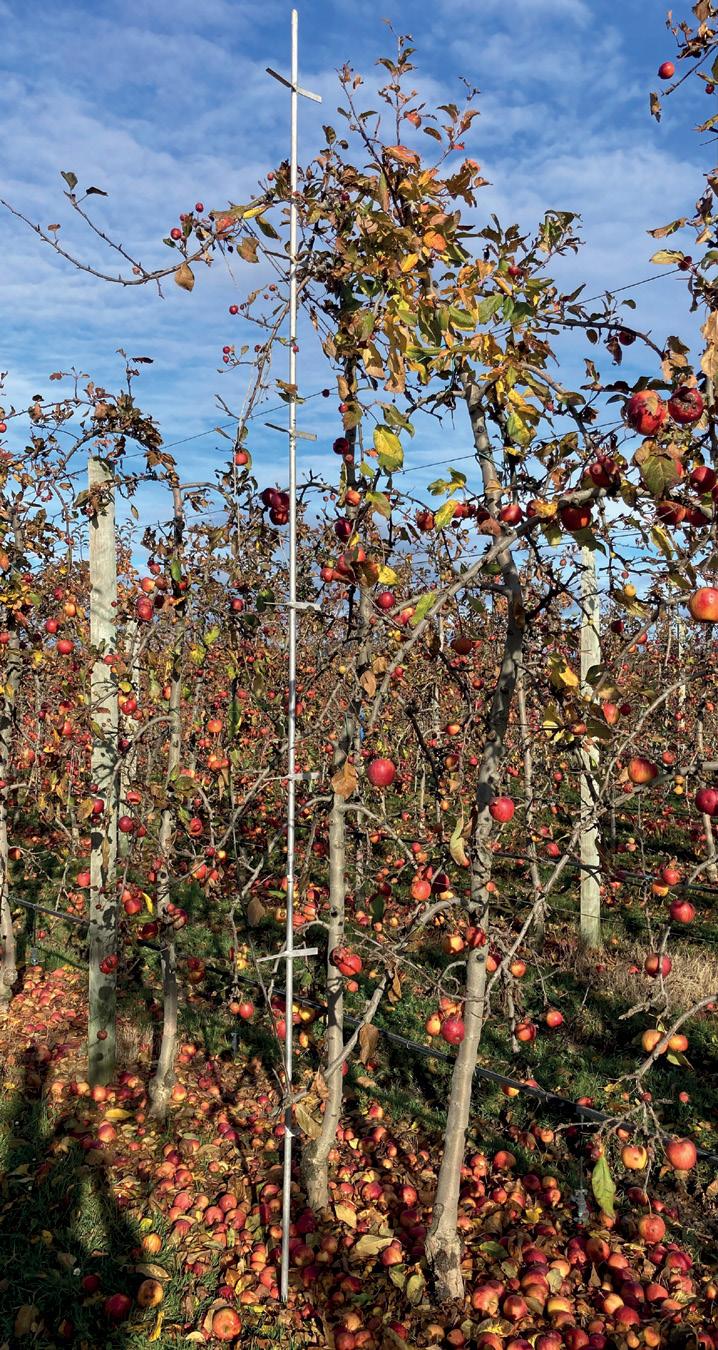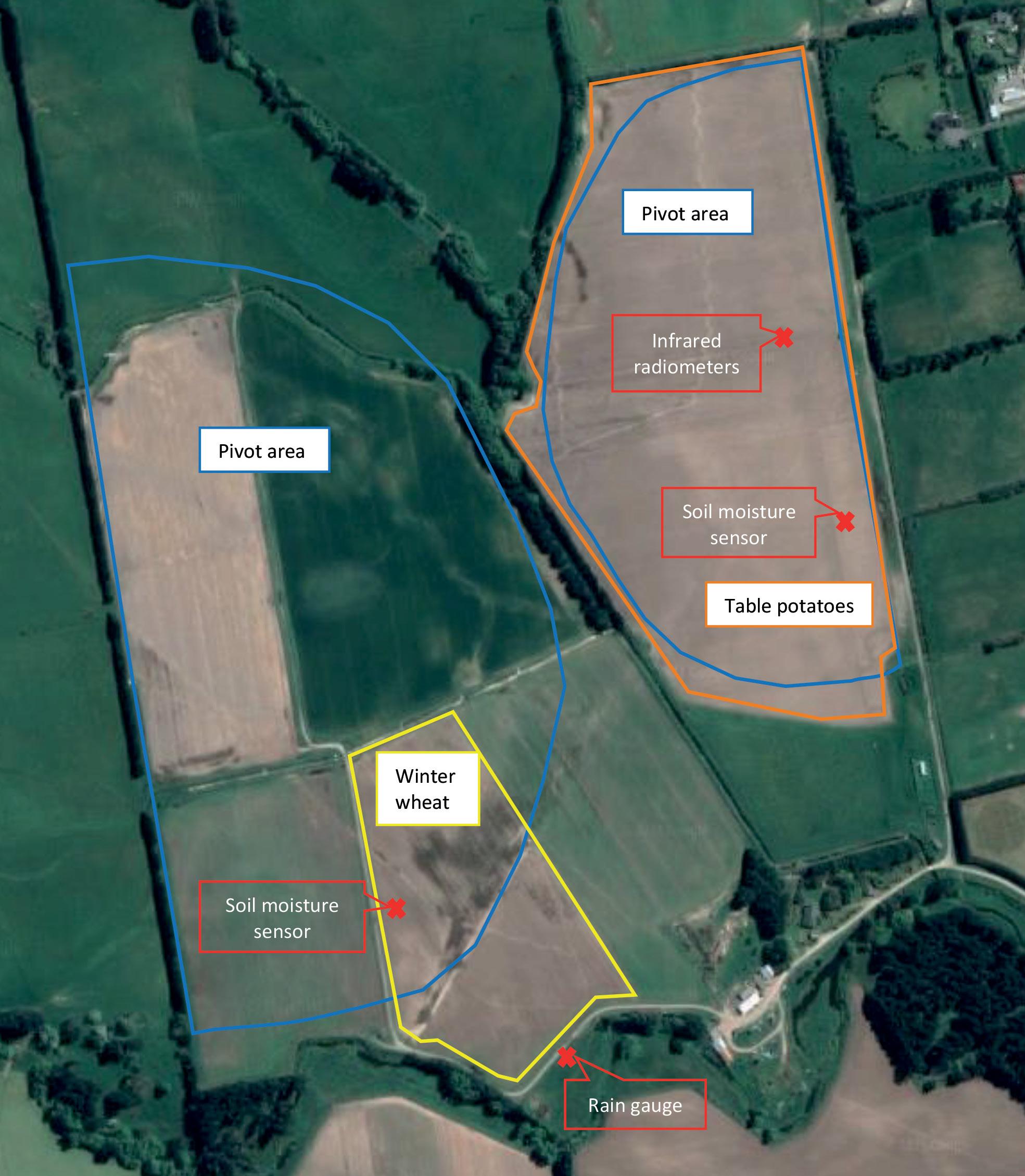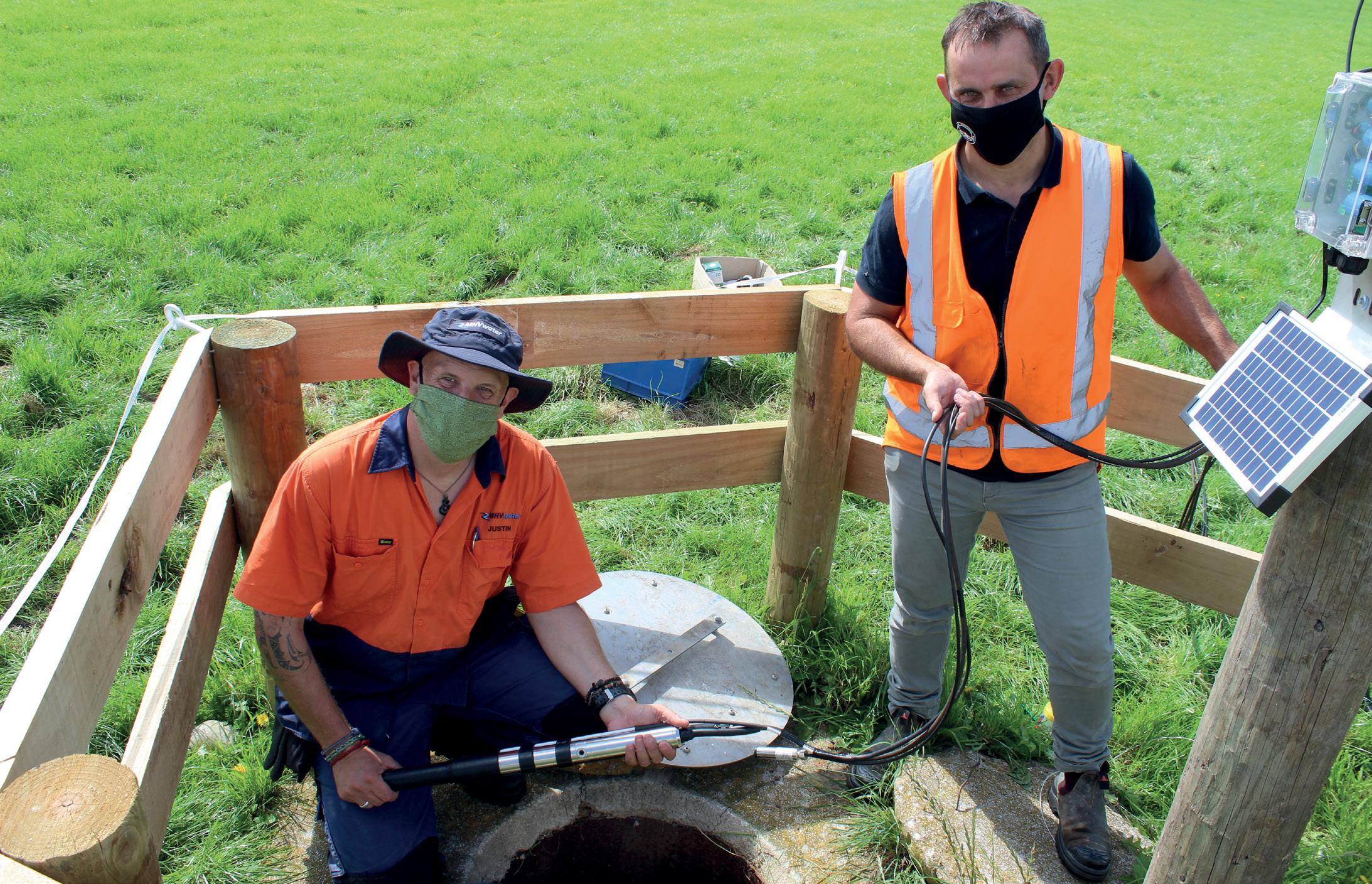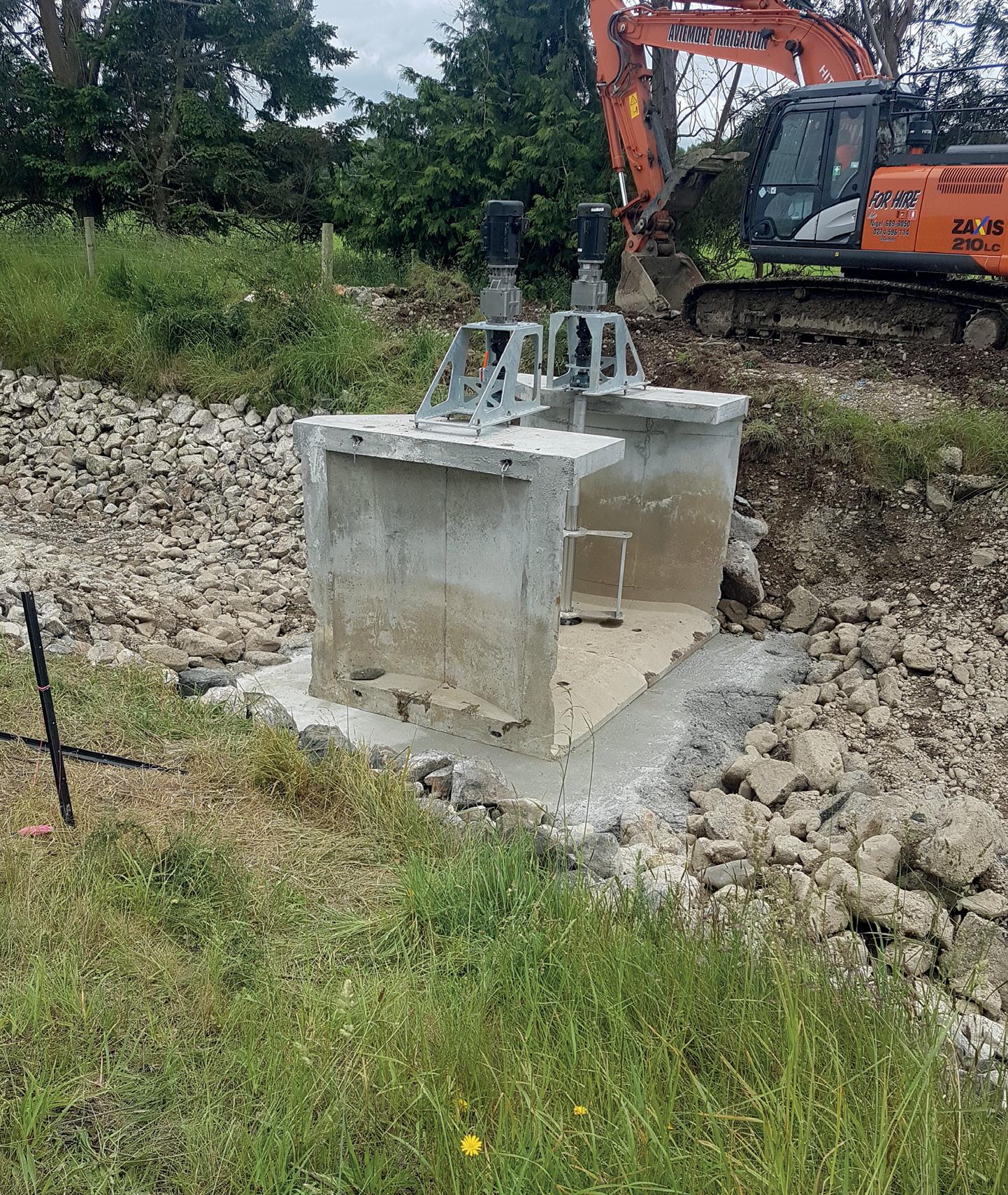
15 minute read
Water Availability and Security the way forward
role of water storage dams in reducing risks downstream due to flood attenuation.
This multi-faceted approach where all users are considered in the design and planning stages is somewhat new. There is a level of uncertainty about how it can be implemented equitably, but inevitably these factors need to be addressed to gain community support.
Advertisement
IS THERE A PRESCRIPTION FOR A SUCCESSFUL IRRIGATION SCHEME DEVELOPMENT?
The short answer is no. There are many factors that need to align to give it the best chance. Under a previous government, MPI commissioned the Irrigation Acceleration Fund Good Practice Guidelines. Stephen McNally was one of the lead authors. While that document is still seen as a comprehensive catalogue of approaches to infrastructure projects, changes in legislation and community expectations have seen a shift in some development priorities.
Success will come from a self-determining community, with genuine active participation. This success is often led by a strong, articulate, active and visible champion.
Environmental outcomes are not an afterthought! Make this an early decision-making criterion and understand what Te Mana o Te Wai means. It is not just a Māori world view, but also articulates what most New Zealanders want for their water, land, and community.
A successful project needs an early, clear consenting pathway which considers the community expectations that are often encompassed in regional plans and regulations. The MPI WAS strategy may help frame regional rules better in the future, enabling storage and distribution infrastructure to meet water availability and security realities.
Analysis of projects across New Zealand and globally show that effective communication is a foundation success element. You only need to look at the International Association of Public Participation scale of successful consultation; the lower end of engagement being a letter drop, the top end being a fully inclusive round table collaboration where all parties address the problem and possible solutions. This active participation is likely the longest path, needing energy and commitment, but having the highest likelihood of success.v
The issue of funding needs to be addressed early. A multi-faceted financial vehicle will be needed, acknowledging the life cycle of investors who will want to participate and exit at different stages.
A project must be technically sound, particularly regarding hydrological and geotechnical aspects. While sometimes difficult to manage, a well-documented peer review process is important for the robustness and defensibility of any decision made.
A project team should take a formal approach to risk management, including allocation of risks to the parties best able to deal with them.
In alignment with a risk approach is the multi-criteria analysis of information that needs to be considered for a project. Stick to a set of criteria against which decisions are made, and avoid being reactive and abandoning early decision frameworks. This may mean leaving options “alive” on the table longer in order to avoid drilling down too early or blinkered solutions.
Look at the benefits of a staged development. Does all the storage need to be established at the start? Users won’t necessarily be present for many years, while some develop their own enterprises around water use. Staging is likely to better reflect the rate of uptake, and may help with cash flow.
THE PATHWAY TO WATER AVAILABILITY AND SECURITY
The next step proposed by the MPI WAS report is establishing a strong and clear water resources management strategy. This goes alongside the country’s existing environmental and social strategies. Having a water strategy is kind of the missing link for a primary producer country like New Zealand.
The full report is able to be download and reviewed by all interested parties at: www.mpi.govt.nz/water-availability-and-security. There are two documents: 1. Water Availability and Security in Aotearoa New Zealand – Supporting the sustainability, productivity, and resilience of the food, and fibre sector – MPI Information Paper No. 2021/04 ; and 2. Water Availability and Security – National Scale Assessment – Aqualinc Research – MPI Technical Paper No: 2021/17.
v. https://cdn.ymaws.com/www.iap2.org/resource/ resmgr/pillars/Spectrum_8.5x11_Print.pdf
Changes to the Resource Management Act (RMA) Explained
Environment Select Committee recommends Government proceed with reform. By Sarah Eveleigh, Partner, Anderson Lloyd.
For many years there has been debate about whether perceived issues with the Resource Management Act 1991 (RMA) could be resolved by further amendments to that legislation, or whether replacement of the Act is necessary.
Following recommendations of an independent Resource Management Review Panel, the government announced, in early 2021, its intention to repeal the RMA and replace it with three new pieces of legislation: • The Natural and Built Environments Act (NBA) – the primary replacement for the RMA • The Strategic Planning Act – providing for development of long-term regional spatial strategies • The Climate Adaptation Act – a targeted piece of legislation addressing issues associated with managed retreat from climate change effects.
At the end of June 2021, a parliamentary paper containing explanatory material about the NBA, and an exposure draft of key parts of the bill, were released and referred to the Environment Select Committee. While it is usual for a full bill to be referred to a select committee, the exposure draft process was used to test and improve the contents of the bill before it goes into the formal parliamentary process. The Environment Committee was tasked with providing feedback on the exposure draft and collating a list of ideas for making the new system more efficient, proportionate to scale/risk, affordable, and less complex.
The Environment Committee received over 3,000 submissions and heard evidence from over 300 submitters. Its report was released in November 2021. It recommended the government proceed with development of the NBA and generally supported the direction of the exposure draft, while making limited recommendations for amendments to drafting and more general comments on matters to be addressed in the full bill.
Key elements of the bill contained in the exposure draft, and addressed by the Environment Committee, are summarised below. Consistent with the recommendations of the Review Panel and statements by Minister Parker, the Environment Committee’s recommendations reiterate and further strengthen the intended policy change away from the management of effects, and towards prioritisation of protection, restoration, and positive outcomes for the environment.

PURPOSE
• The purpose of the NBA is both to enable Te Oranga o te Taiao to be upheld, including by protecting and enhancing the natural environment; and to enable people and communities to use the environment in a way that supports the well-being of present and future generations. Te Oranga o te Taiao is described as incorporating the health of the natural environment; the relationship between iwi/hapū and the environment; the interconnectedness of all parts of the natural environment; and the relationship between the health of the environment and its capacity to sustain all life. • The Environment Committee recommends that amendments be made to the purpose clause to reflect that environmental limits have priority in the system, and use more directive language to require protection of the natural environment. It also recommended that more work be done to develop the concept of Te Oranga o te Taiao, including by clarifying that all New Zealanders have relationships with, and responsibilities to look after, the natural environment.
ENVIRONMENTAL LIMITS
• The NBA would require that limits are set to protect the ecological integrity of the environment or human health. Limits are to be set for air, indigenous biodiversity, coastal waters, estuaries, freshwater, and soil through the National Planning Framework and Natural and Built Environment (NBE)
Plans (discussed below). • The Environment Committee recommends provisions that also enable use of transitional limits and environmental targets. In addition to setting a timebound pathway towards achieving an environmental limit, this would address concerns that use of environmental limits could create a ‘race to the bottom’, rather than promoting protection and restoration of the environment as intended by the reform.
ENVIRONMENTAL OUTCOMES
• A key policy change sought through the reform is a move away from managing effects and towards achieving positive outcomes for the quality of the environment. The exposure draft provided a list of 16 discrete environmental outcomes, to be promoted through the National Planning
Framework and NBE Plans. The drafting of the outcomes, and the potential for conflict between them, was a focus of submissions to the Environment Committee. • The Environment Committee recommends consolidating the outcomes under the headings of natural environment, cultural values, climate change and natural hazards, and well-functioning urban and rural areas.
The drafting has been simplified, with a number of specific directions consolidated into fewer high level outcomes. More directive and consistent drafting is also recommended, regarding directions to
protect, restore, increase/decrease, enable and provide for identified matters. • Recommended environmental outcomes of particular relevance to the irrigation sector include: – reduced risks arising from, and better resilience of the environment to, natural hazards and the effects of climate change – enabling enough development for housing, business use, and primary production to meet the diverse and changing needs of people and communities – the ongoing and timely provision of infrastructure services.
NATIONAL PLANNING FRAMEWORK (NPF)
• The NPF is to provide direction on the integrated management of matters of national significance, and matters for which national or subnational consistency is desirable. • The Environment Committee recommends that: – the purpose of the NPF be expanded, to clarify that this includes resolving conflict between environmental matters (including the environmental outcomes), and setting environmental limits and strategic direction. – the NPF should include: w relevant considerations that decision makers must have regard to when setting environmental limits w mandatory content on all environmental outcomes w stronger direction on resolution of conflicts between environmental outcomes. This would include a requirement for the Minister to have regard to whether it is appropriate for conflicts to be resolved at a national level through the NPF, or at a regional level by NBE Plans.
NATURAL AND BUILT ENVIRONMENT PLANS (NBE PLANS)
• These will replace current regional and district plans. The NBA will require one consolidated plan for each region (approximately 14 NBE Plans for the entire country), to provide a framework for integrated management of the environment. NBE Plans would be developed by a joint planning committee, including representatives of regional and district councils, mana whenua and the Minister for Conservation.

SYSTEM EFFICIENCY
In respect of the system efficiency, the Environment Committee made a number of high level recommendations, including that: – capability and capacity within the system be boosted – existing definitions and concepts be retained as far as possible, to improve certainty and reduce the need for legal action – dispute and conflict resolution be approached in a less adversarial, and more inquisitorial way – digital tools be coordinated and improved. The Environment Committee report reiterates the intention that environmental limits are set, and conflicts between environmental outcomes are resolved, at the NPF and NBE Plan level, and not through subsequent resource consent applications. As we have experienced through the National Policy Statement for Freshwater, directive policies and imposition of limits at a national level can be determinative and leave little, if any, room for consideration of case-by-case merits of subsequent consent applications. As national and regional planning provisions become more directive, participation in those processes becomes increasingly important. However, that can be challenging for individual submitters, and we consider there will be advantages in industry representation or collective groups leading participation and representing the views of members in those processes.
The Environment Committee’s report will inform further development of the NBA bill. It is anticipated that complete bills for the NBA and Strategic Planning Act will be released in early 2022, and will be passed into law by the end of 2022. Consultation on the Climate Adaptation Act is scheduled to occur through 2022, ahead of release of that bill in early 2023. Each bill will be referred to select committee, and there will be further opportunities for public submissions through those processes.
Sarah Eveleigh specialises in resource management law. She advises clients on a broad range of matters including consenting, compliance, planning processes and due diligence, with particular expertise in freshwater management and agribusiness. Sarah has acted for water suppliers, statutory bodies, public interest groups and individual farmers on regional plan changes relating to water management, rural land use and nutrient management, and on consenting of water storage and irrigation schemes. She has been practising in Christchurch since 2006.
LEARN MORE: The important role water plays in growing kiwifruit

Horticulture is the art of cultivating plants to produce food, flowers, fruits, nuts, vegetables, herbs, and more. We caught up with Sandy Scarrow and Phoebe Scherer, who are horticulture consultants based in the Bay of Plenty, also working throughout Northland and Gisborne. We asked them about growing kiwifruit and the role irrigation plays in doing so.

How did you become involved with kiwifruit irrigation?
We got involved in soil moisture monitoring and received irrigation recommendations from a colleague in Motueka who had formed a relationship with Sentek, an Australian company with some very good soil moisture monitoring equipment. At the time, growers were using either tensiometers or kicking the dirt to inform their irrigation decisions. Neither of these strategies provided good answers for them.
What do your roles involve?
We offer a range of services for soil moisture monitoring. One service is the supply of fully autonomous, telemetry soil moisture monitoring technology which allows the grower to access their soil moisture data from the cloud at any time, anywhere. This allows the grower to see the impact of any rainfall, drainage, and crop use to inform their irrigation decisions in real time. Another product allows for similar data access but relies on Bluetooth technology rather than telemetry to download the data. Either the grower can do this, or we can do this as a part of a weekly service package during the irrigation season. Our original service offer was a weekly visit to the grower’s property to “plunge” the sites to read the soil moisture at that time. This service gives the grower a record of soil moisture down to a depth of one metre. From this data we provide recommendations regarding how much water the grower needs to apply as irrigation.
What experience do you have with kiwifruit irrigation?
Fruition, the company we work for, has been offering this service for the past 20 years. The basics of monitoring soil moisture and making recommendations based on crop conditions, forecast rain and grower targets remain core to our business. Technological advances improve our methods.

What considerations do you make before designing/developing a kiwifruit irrigation system?
We don’t design irrigation systems. We work with what the grower already has in place, and try to optimise its use.
Understanding soil characteristics in terms of its water holding capacity and drainage properties goes a long way to helping inform what type of irrigation set up would be the most effective for your orchard. Whether there is any significant variability in soil characteristics across the orchard can sometimes help inform where to place different irrigation zones which can be turned on and off independently from each other.
We have used our technology to help growers decide if they need an irrigation system. There are some growers who have thought that water was not a limitation for them. For some this is true, but we have found that for some this is not the case. Crop volume and quality is seen to have been limited in times of extreme dryness.
What are the crop water requirements for kiwifruit?
Water requirements for kiwifruit vary depending on the time of year. Typically, we irrigate from October through to March, depending on the soil moisture. To achieve good dry matter results it is recommended that growers work a dry-out strategy coming into harvest, so irrigation recommendations taper off as harvest season approaches. Kiwifruit is thought to have a Crop Factor of one. That is, it is recommended that you replace the water lost through evapotranspiration (ET) with either irrigation or rainfall. Other crops have different crop factors which may mean you apply more or less than ET.
Water quality is important. There are some nutrients that may be applied in the water that, in elevated levels, can be toxic to the kiwifruit plant. Surprisingly to some growers, boron is an example of this. There may be a need to limit irrigation if there is excess boron in the irrigation supply. What growing requirements are specific to kiwifruit?
Young kiwifruit vines need good supplies of water to grow and develop, and this needs to be directed towards the smaller root ball of the young vines to be most effective. The financial impact of not getting this right can be very high, particularly with the high price growers are paying for the Gold3 licence at present. What many people are not aware of is the increasing importance of irrigation if the orchard has a high water table or challenging anoxic soil conditions. Kiwifruit as a vine is intolerant of water logging, therefore its roots may die in waterlogged soil. This root death results in fewer roots available to accept the water needed, necessitating more careful management of irrigation to this limited root zone.
What are the factors you feel are most important with your development?
The initial expenditure on irrigation is only a small part of the overall cost of the development. It is best to design for the optimum; a system that will provide water in volumes that can provide overhead frost protection. However, before spending money on this it is best to determine whether there is the possibility of gaining consent to use either surface water or groundwater. Some regional councils have overallocated their water supply. Depending on the source of water, sprinklers are the best delivery system, although drippers are preferred where flow rates are low.
What are the challenges, short falls, or commonly made mistakes you often come across when it comes to kiwifruit irrigation systems?
Growers may jump the gun and install irrigation systems without considering the volume of water needed and the availability of that water. Kiwifruit typically requires more water than is economically viable to buy from municipal supply. Instead a more reliable supply of water is from surface water or groundwater. We advise talking to your










